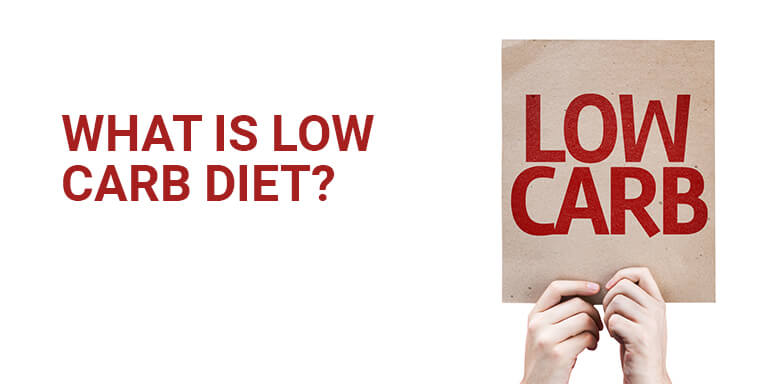A low-carb diet is one with a restricted carbohydrate intake. It emphasizes more on protein and healthy fat. To follow a low carb diet, we need to avoid certain foods like grains, starchy vegetables, certain beverages and some fruits. There are different variations of low-carb diet. The difference is based on the type and amount of carbohydrates we can consume on them.
Purpose and benefits of low-carb diet
A low-carb diet is generally adopted for its weight loss benefits. However, some variations of low-carb diets have more health benefits than just weight loss. For example, it can help in reducing the risk of type 2 diabetes as well as metabolic syndrome. It is also the preferred diet for people suffering from diabetes, PCOS and thyroid.
Simple and complex carbohydrates
Complex carbohydrates are the ones that digest slowly and therefore have a lesser effect on blood sugar unlike simple carbohydrates which digest fast and spike blood sugar. Complex carbs are also provide fiber.
Examples of complex carbs are whole grains, leafy green vegetables and fruits. Examples of simple or refined carbohydrates are white breads and pasta, cookies, cake, candy, and sugar-sweetened sodas and drinks.
How does the body use carbohydrates?
The body uses carbohydrates as its main energy source. During digestion, complex carbs get digested and broken down into glucose and get released into the blood.
A hormone called Insulin is then released from the pancreas to help glucose in the blood to enter the body’s cells, where it can be used for energy. Unused or extra glucose is then stored in the liver and muscles for future use and if there is still some unused glucose left in blood, it gets converted into body fat.
A low-carb diet therefore restricts the production and entry of excess glucose in the blood and this makes the body burn stored fat for energy which in turn leads to weight loss.
Foods to consume on a low-carb diet
A low-carb diet focuses on proteins and some non-starchy vegetables. It limits grains, legumes, fruits, breads, sweets, pastas and starchy vegetables, and sometimes nuts and seeds too. However, some low-carb diet plans allow small amounts of fruits, vegetables and whole grains. In general, a daily limit of 20 to 60 gm of carbohydrates is kept on a low-carb diet.
Initial side effects of low-carb diet
A sudden and drastic reduction in carbohydrate intake may result in some temporary side effects, such as constipation, headache or muscle cramps.
In case of severe carb restriction, the body switches from breaking down carbohydrates to breaking down fat for energy production. This is called ketosis. Ketosis can also cause some initial side effects such as bad breath, headache, fatigue and weakness.
Low-carb diet in the long run
There is no demonstrated risk that a low-carb diet can have in the long run. However, restricting carbohydrates for a long term may result in vitamin or mineral deficiencies and gastrointestinal disturbances because of certain food restrictions. Also, since saturated and trans fats, such as meat and high-fat dairy products may also lead to health issues, so if we choose to follow a low-carb diet for a long term, we must pay attention to the sources from where we are fulfilling our fat and protein requirements.

